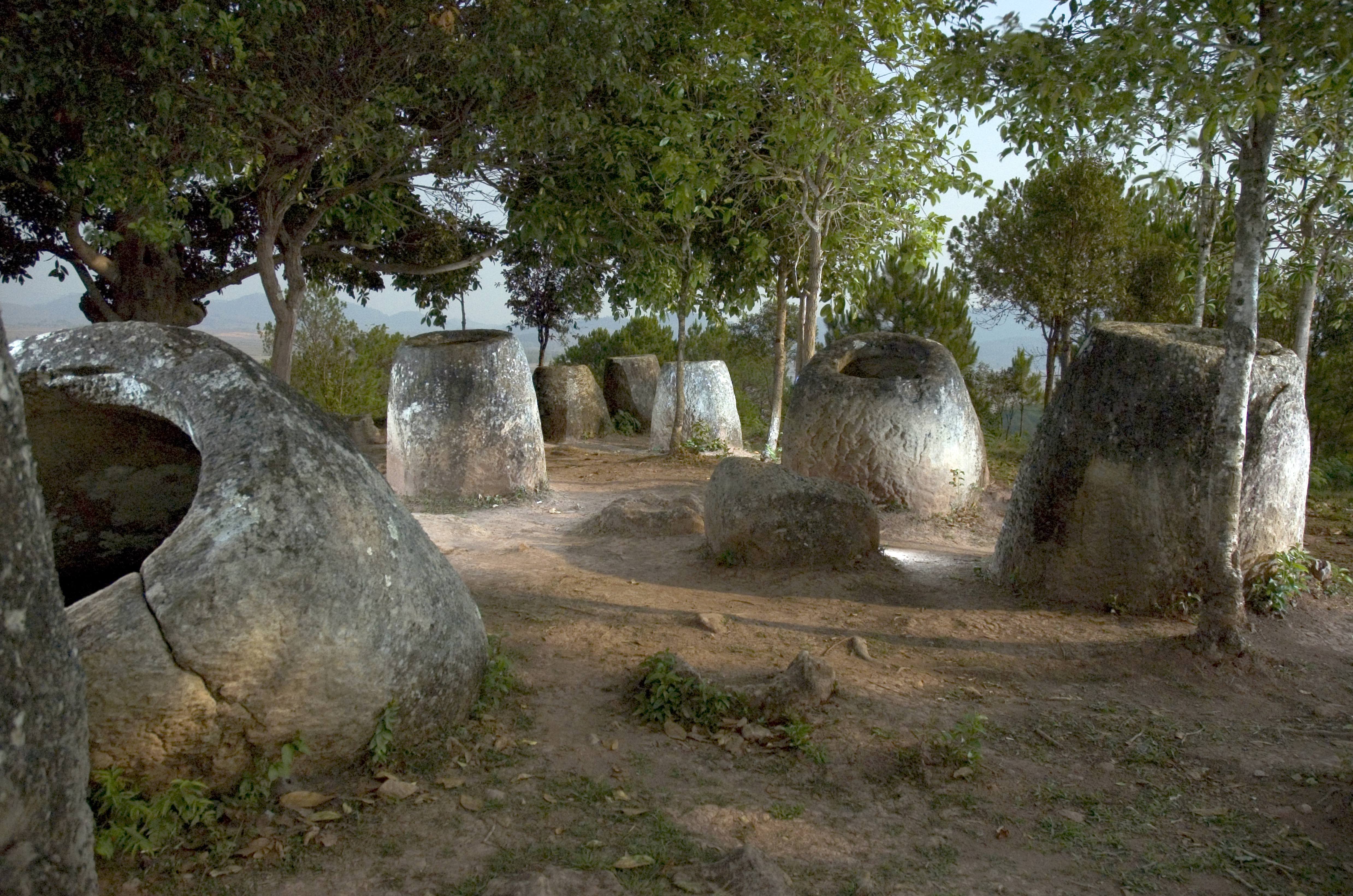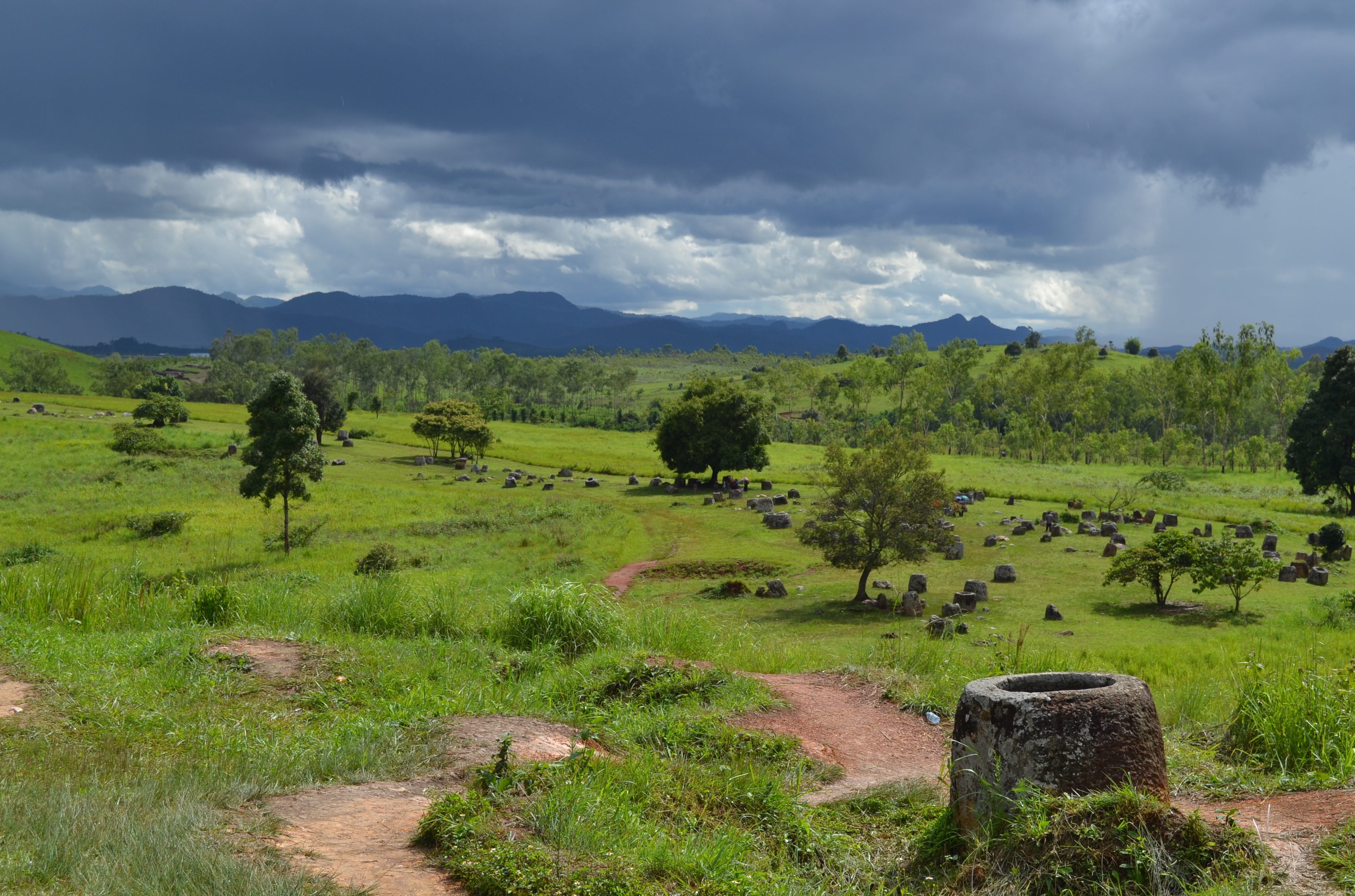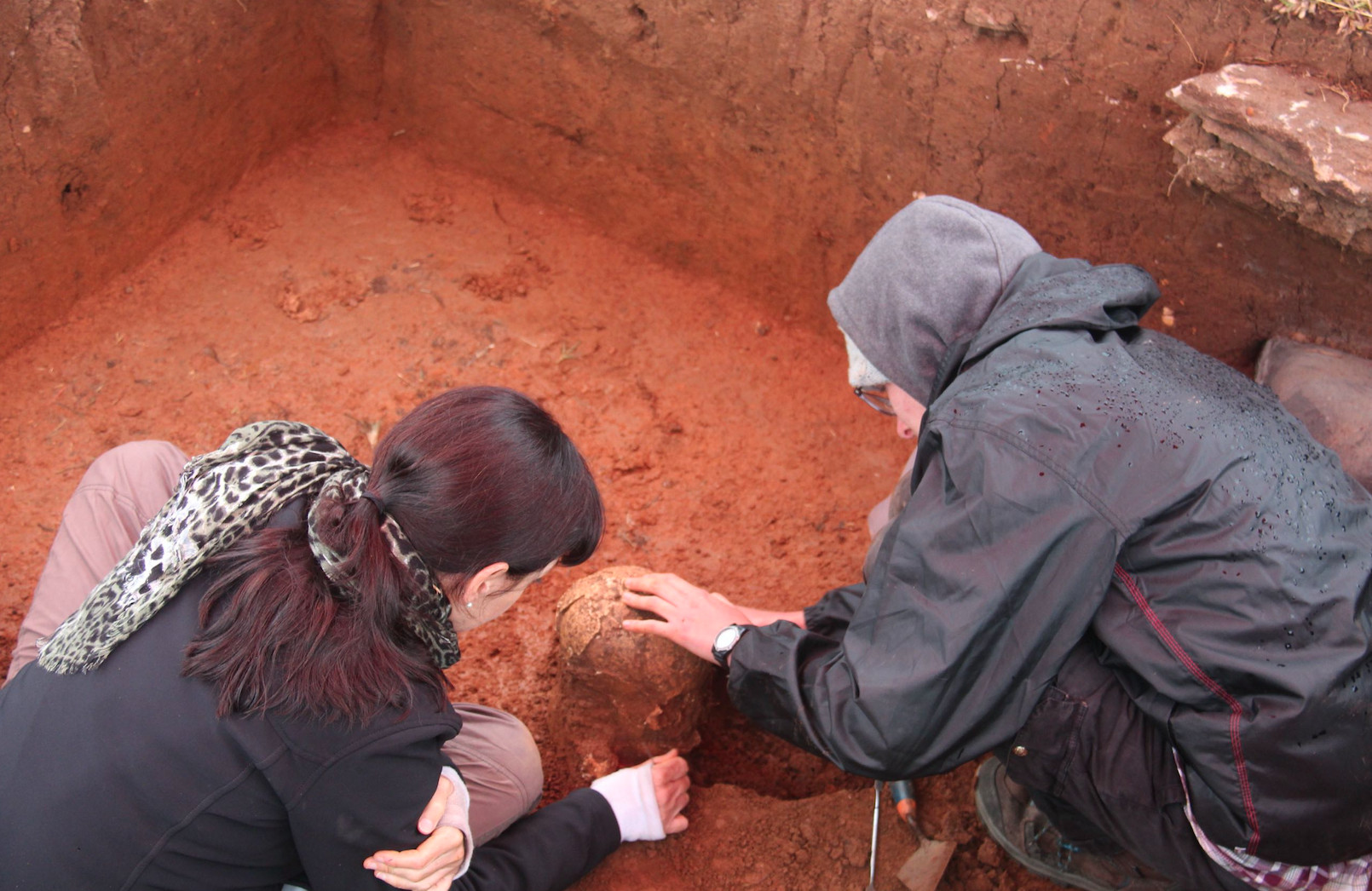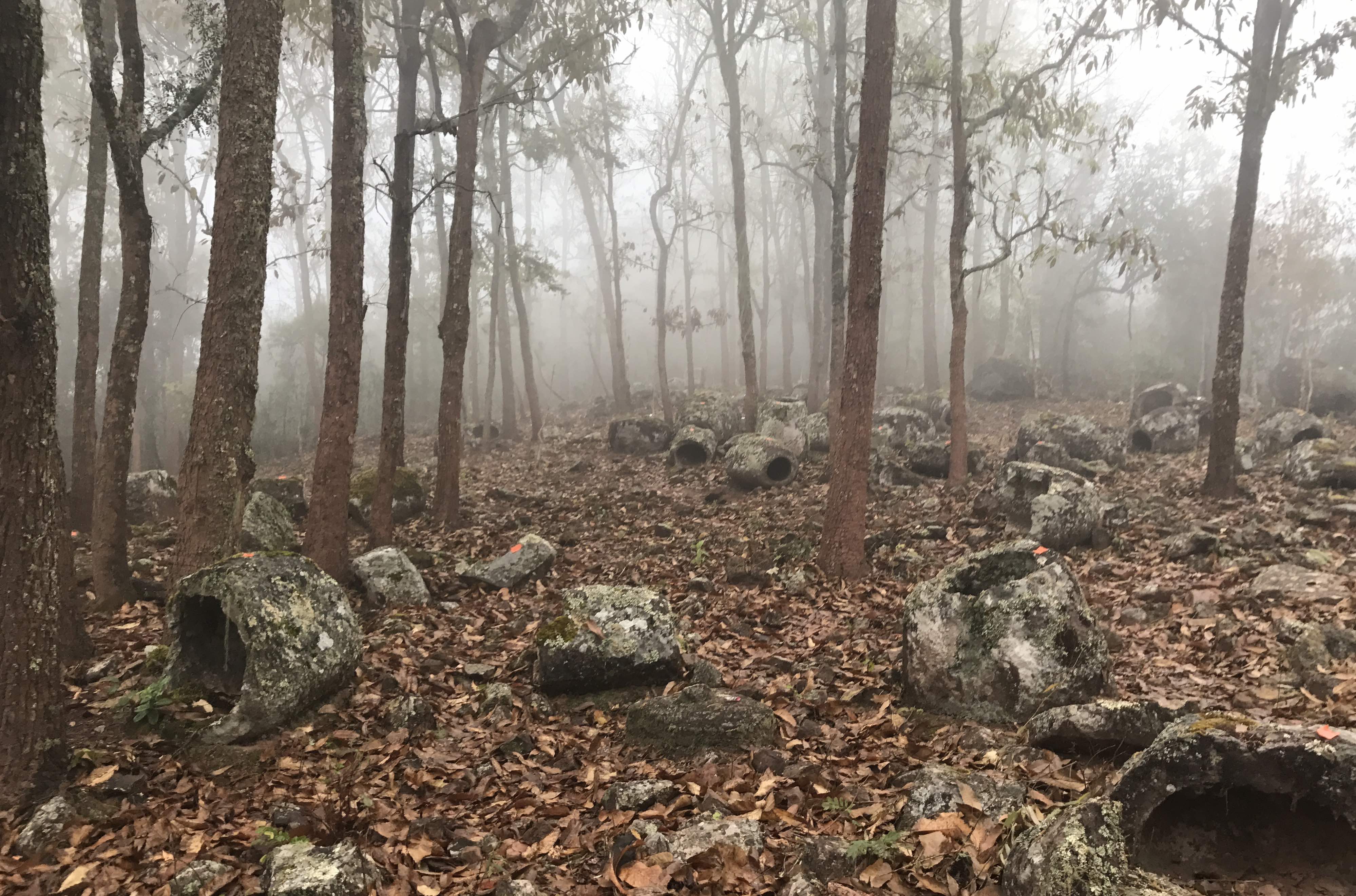
Arts & Culture
Lucky discoveries of lost ancient history

The mysterious Plain of Jars in Laos, which is giving archaeologists clues to an ancient civilisation, has just joined the list of UNESCO World Heritage protected sites
Published 8 July 2019
In the mountains and plains of upper Laos sit thousands of stone jars, the only relics of an ancient civilisation possibly 2500 years old.
The jars, weighing up to 20 tonnes, appear to be part of a complex burial ritual, and were transported from quarries up to 10 kilometres away.

The Laos Plain of Jars joined the UNESCO World Heritage Register in July, with the committee describing the area as “the most prominent evidence of the Iron Age civilisation that made and used them until it disappeared”.
It’s the third World Heritage property in Laos, after Vat Phou and Luang Prabang.
This is a global acknowledgement of the cultural and historic significance of this remarkable collection of sites, but we actually know very little about the people who created them, or even when they were placed.

Arts & Culture
Lucky discoveries of lost ancient history
No other evidence of this society exists beyond these mortuary sites; adding to the intrigue are a group of remarkably similar jar sites some 1200 kilometres away in Northeast India.
Using drones, ground penetrating radar, advanced chemical analysis and some good old-fashioned detective work, researchers are diligently putting together the missing pieces of this puzzle.
Dr Louise Shewan, is an archaeological scientist and Centenary Fellow from the University of Melbourne and co-leads an Australian Research Council funded research team – along with Associate Professor Dougald O’Reilly from ANU, and Dr Thonglith Luangkoth from the Laos Department of Heritage – that has been studying the Lao megalithic jar sites since 2016.
The team follows in the footsteps of pioneering archaeologist Dr Madeleine Colani, a Frenchwomen who excavated the sites in the 1930s while employed by the École Française d’Extrême-Orient. Professor Shewan expresses “extreme admiration” for Dr Colani and her work.
“She was diminutive in stature but a powerhouse who started this work at the age of 65,” she says.

Sciences & Technology
The hi-tech archaeological scientists
“With assistance from her younger sister, Eleonore, she researched, mapped and recorded many jar sites, collating individual attributes of the jars, and produced a two-volume piece of work.”
Dr Shewan and Dr O’Reilly have recently published a translation of Ms Colani’s work, Megaliths of Upper Laos, with up-to-date additions based on their more recent discoveries.
Each year the team spends several weeks identifying, mapping and excavating jar sites, and then many months analysing samples and data collected on these trips.
Much of this work is done in the research labs in the School of Earth Sciences at the University of Melbourne.

On their most recent trip, in February this year, their co-supervised PhD student, Nick Skopal and Lao colleagues found 15 new sites containing more than 100 jars.
The sites are about a six-hour bus trip from the Laos capital, Vientiane.
“The sites are mesmerising,” Dr Shewan says.

Arts & Culture
Brought to life, 2000 years later
“In 2017, we conducted research at a remote mountainous site that was especially mystical, heavily vegetated and cloaked in mist.”
Only a small number of the more than 100 known jar sites have been studied in depth. Some are inaccessible due to unexploded ordnance (UXO) left over from the Vietnam war era.
A clearing program is steadily opening up more sites, allowing the archaeologists to start building a picture of the people and society that created them.
Human remains, including teeth, have been found buried around the jars, and so it is believed that these sites are associated with funerary practices.

Dr Shewan says by analysing tooth enamel for ‘signatures’ or chemical residues preserved in the teeth like strontium or oxygen ratios, we can find out how the people used the landscape and where they obtained their food during childhood.
“Strontium isotope ratios vary in bedrock according to age and composition,” she says. “This signature is carried through to the soil via weathering, inherited by plants, and absorbed into teeth and bones of animals and humans through food and water.”
“Oxygen isotopes vary with climate, environment and geography. The oxygen isotope composition of skeletal tissue is related to that of ingested drinking water.
“Depending on the type of tooth analysed, we can use these signatures to get a snapshot of life from between birth to 16 years of age.”
The team are also using a similar kind of analysis to create chemical fingerprints for the stone jars, which can then be matched to potential quarry sites.
“Geochronology work has so far confirmed that the jars, some weighing more than 20 tonnes, were transported from quarry sites eight to 10 kilometres away,” says Dr Shewan.
But we still don’t know how the jars were moved.
“The actual mechanism of transport is another area of the research.”

As the work continues, the team are using drones to take photographs and video footage to create 3D models and build a much richer map of jar sites than they can from the ground.
“We will use drone images to explore possible spatial patterning in jar placement, search for habitation areas as we don’t know where the population lived, measure distances between jar sites and observed quarry sites,” says Dr Shewan.
“And potentially find new sites under the forest canopy using drone-mounted lidar.”

Arts & Culture
A pressing matter: Ancient Roman food technology
Lidar technology uses a pulsed laser to measure distance from the drone and can penetrate canopied and inaccessible sites providing highly accurate details of the ground surface.
Remarkably, similar jars sites have been found over 1200 kilometres away in northeast India.
“The Assam sites are now gaining renewed interest given identified linguistic and genetic connections between Southeast Asia and Northeast India, and we hope to more fully explore these sites and the links between them in collaboration with our colleagues in India in the near future,” says Dr Shewan.
Dr Shewan, who has previously worked on prehistoric sites near the World Heritage site of Angkor Wat in Cambodia, is excited to see the Plain of Jars recognised in the same way.

“The World Heritage listing of the Lao megalithic jar sites will bring this unique cultural landscape to global awareness, leading to greater conservation of the sites.
“It heightens the need to understand more about the culture that created the sites.”
Banner: Getty Images